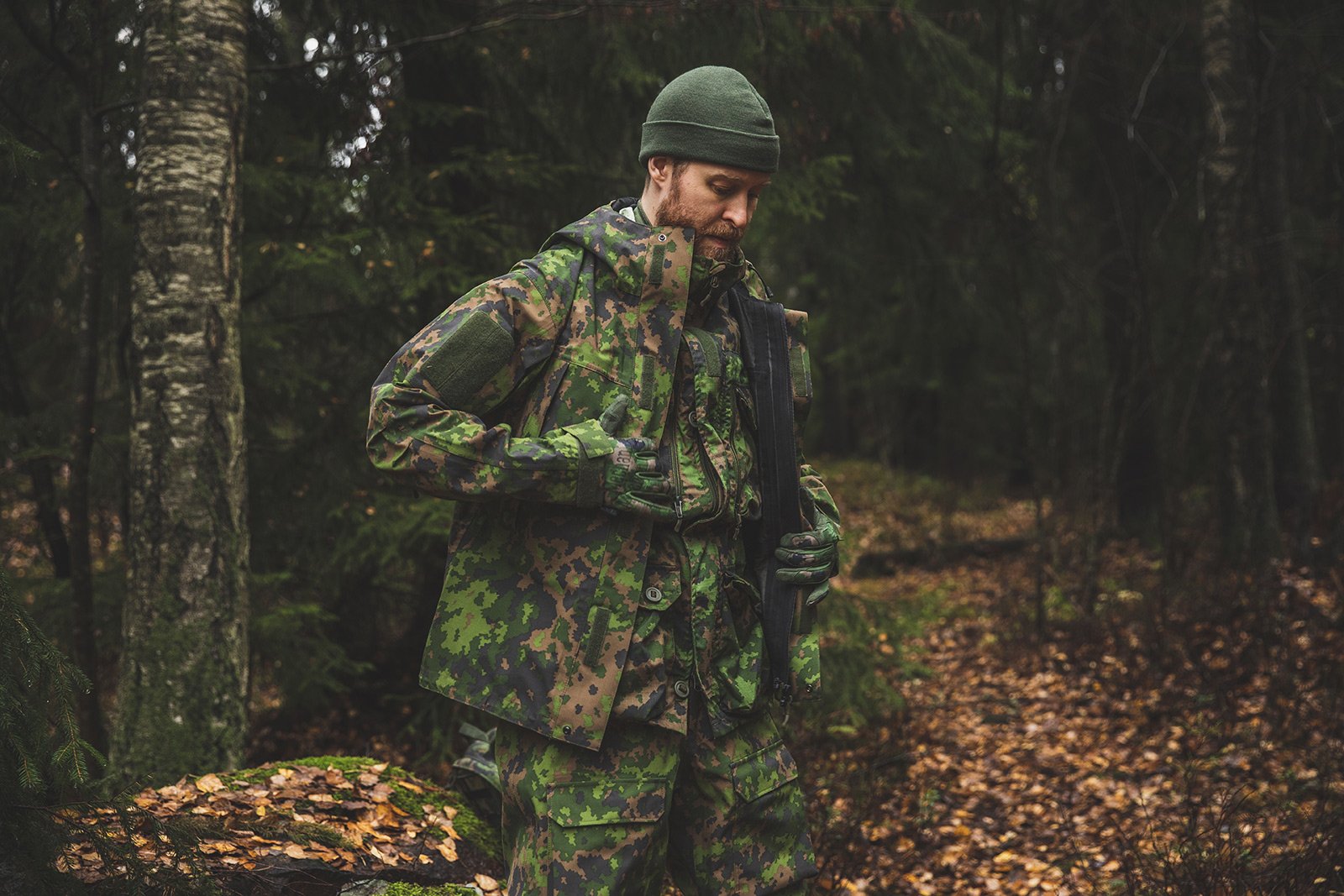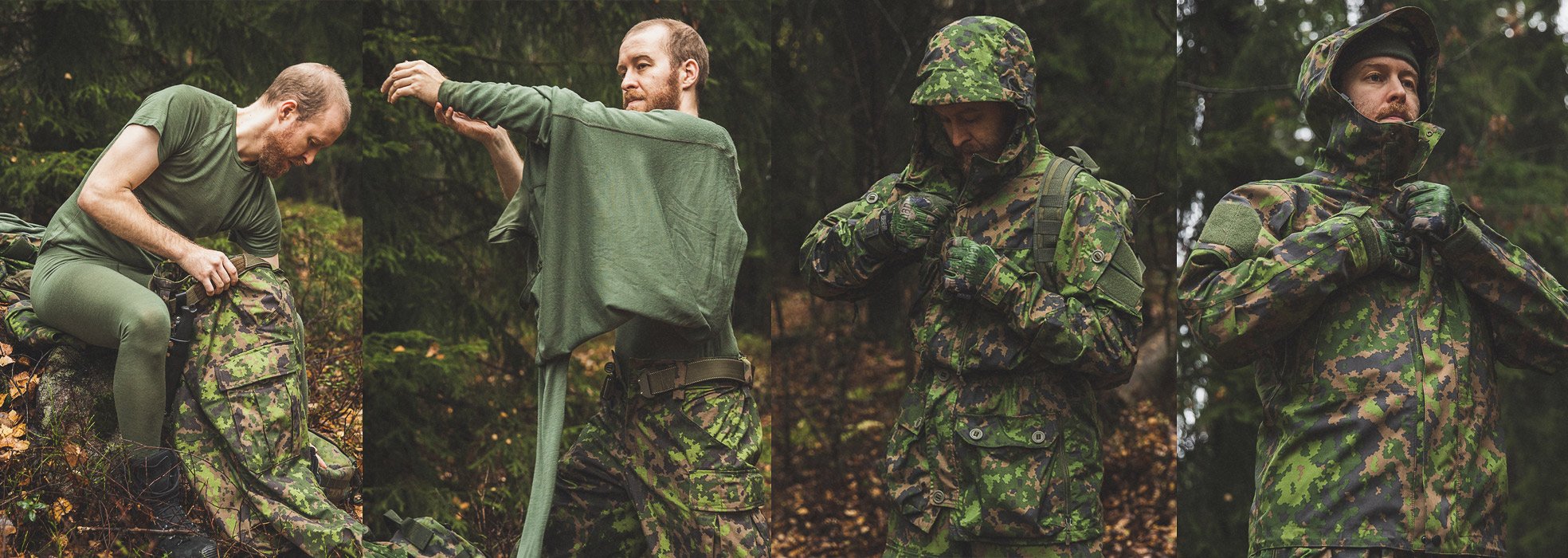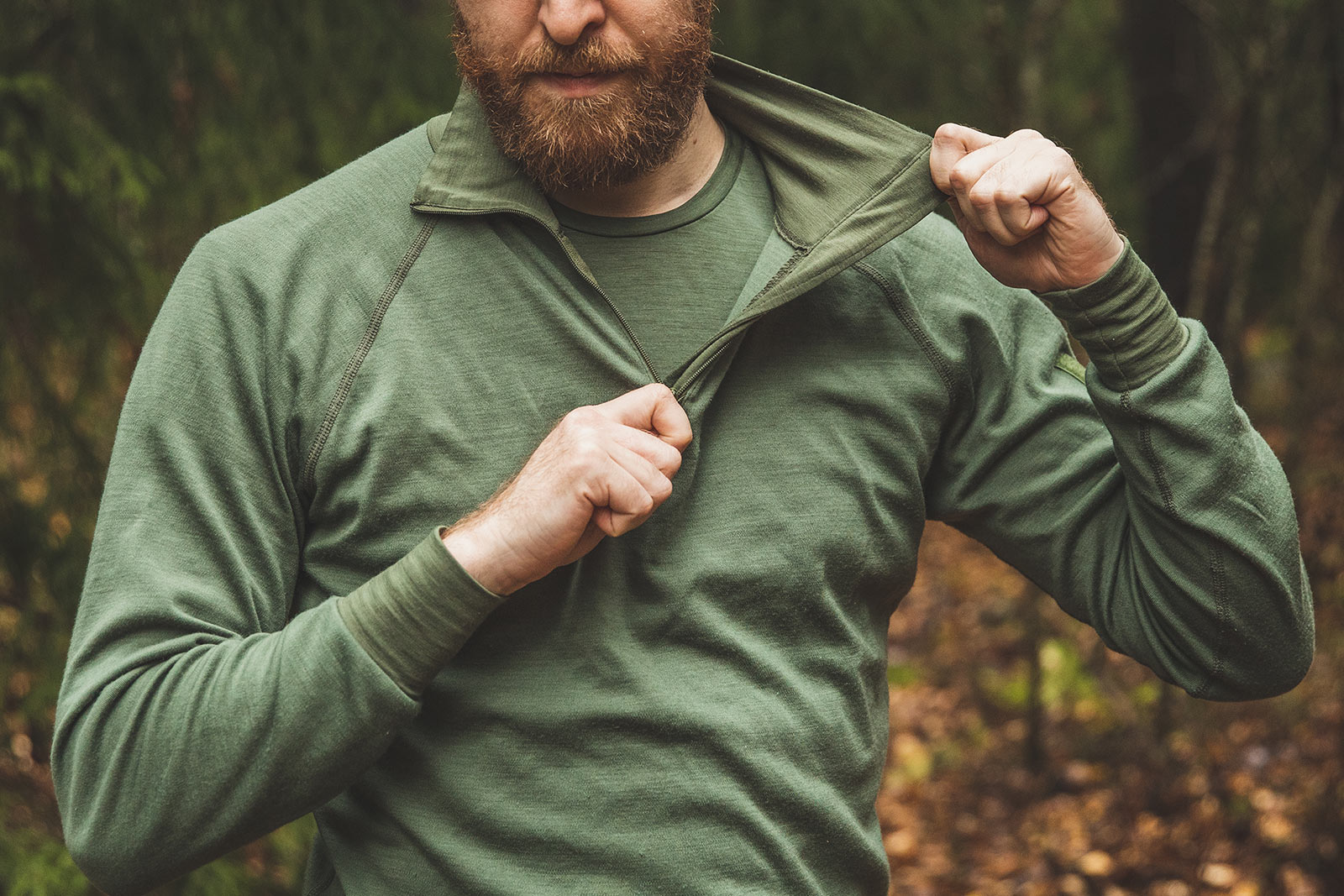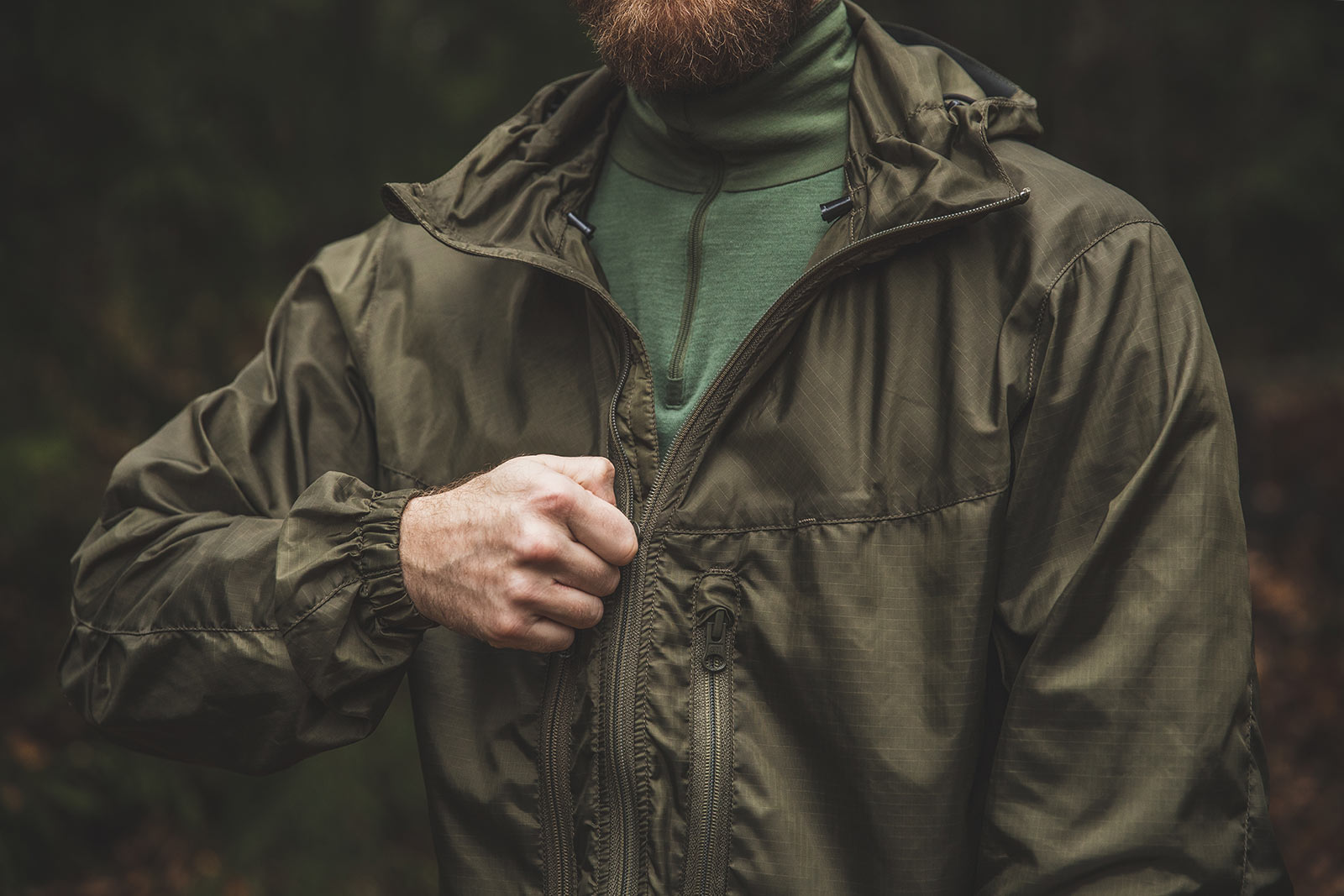
How to dress in layers
How to dress in layers
This article is written from a Finnish viewpoint based on the Nordic climate. And since we are utterly commercial, the clothing presented is based on Varusteleka's selection. In this article, we’ll go through the basics of layering clothing and provide recommendations on what you should purchase for each layer. You can access different parts of the article and the recommendations via the contents menu below.
The human body likes optimal conditions, not too hot nor too cold and especially not wet. With our clothing, we try to control the effects of these conditions on us. This is how we stay functional and as comfy as possible, even in nasty weather
Layered clothing or dressing in layers is no magic trick. It´s just the smart thing to do. To put it simply: layered clothing means assembling your clothing out of different layers so that each serves a purpose and works well together.
 Contents
Contents
- Base layer
- Mid layer
- Outer layer
- Extra layer
- Accessories
- An example table of layering clothing for different conditions
- Layered clothing videos
Base Layer
The base layer acts as insulation between your skin and the outer clothing layers, which ensures some level of comfort in any weather and activity by keeping your skin feeling dry and suitably warm. By transporting moisture away from your skin, you´re left feeling at least moderately dry, which adds to your comfort.
The very first layer, worn next to your skin. Base layers should be lightweight, breathable, and moisture-wicking. Short-sleeved shirts and underwear will do in warm temperatures, whereas in colder climates, you should opt for long johns and longer sleeves. Polyamide, polyester, merino wool, and blends of these are excellent materials for base layer use.
Mid Layer
 On top of your base layer comes the mid-layer. These can vary greatly and should always be picked with good thought based on weather and activities. Mid layers are there to provide warmth via insulation. Mid-layers come in many forms; most importantly, they should still be highly breathable and moisture-wicking!
On top of your base layer comes the mid-layer. These can vary greatly and should always be picked with good thought based on weather and activities. Mid layers are there to provide warmth via insulation. Mid-layers come in many forms; most importantly, they should still be highly breathable and moisture-wicking!
When you´re moving around a lot in bleak weather, you might be good to go with mid-weight long johns and a turtleneck over your base layers. But if you stand still in the same weather, you should layer up warmer with loft mid-layers or similar highly insulating garments.
As the old wisdom goes: "In cold weather, you should dress so that you freeze a little bit when standing still. Thus, you won´t sweat too much when on the move."
Shell Layer
 A shell layer does not automatically mean waterproof membranes. It is simply the outermost layer of your clothing. The shell layer protects the lower layers from the elements and other things they are not designed to deal with, such as wind, rain, and abrasion.
A shell layer does not automatically mean waterproof membranes. It is simply the outermost layer of your clothing. The shell layer protects the lower layers from the elements and other things they are not designed to deal with, such as wind, rain, and abrasion.
The perhaps most useful shell layer is a lightweight non-waterproof, unlined jacket and trousers. However, an insulated shell layer can be a smart and functional choice in cold temperatures. Keep in mind: the more breathable the shell layer is, the less sweaty you will get and the more comfortable you will be. When purchasing a shell layer, you should keep in mind to buy clothes that are roomy enough to fit at least a base and mid-layer
Rainwear always divides people's opinions. Should rainwear be worn over or instead of your regular shell layer? In stationary use, rainwear can pretty much always just be worn over your regular clothing without any adverse effects. But when you´re on the move, that extra layer of badly breathing clothing combined with the bulk of your normal shell layer under it can be a sweaty and uncomfortable combination. In this case, you can switch out your jacket and pants for waterproof alternatives.
Extra Layer
 Especially in cold weather, it´s extremely important to put on warm clothing. This should be done quickly when your activity level drops, for example, when taking a break during a hike or march. But adding and removing mid-layers can be a real hassle and take too much time.
Especially in cold weather, it´s extremely important to put on warm clothing. This should be done quickly when your activity level drops, for example, when taking a break during a hike or march. But adding and removing mid-layers can be a real hassle and take too much time.
In these kinds of conditions, we recommend looking into carrying some extra thermal shell layers, something you can just quickly throw on over all your regular clothing. These should be purpose-built and generously oversized to function properly; trousers with full-length side zippers along the outside of the legs are just great! This layer should also be quick to get out of in a hurry.
This layer is just temporary. Your regular clothing (base, mid and shell layers) stays unchanged while this layer is quickly thrown over them all for breaks and other moments of low activity. Doing this saves you a lot of time, and you can make the best of those short breaks and focus on getting some rest.
Accessories
You can apply the basics of layered clothing to your head as well. A merino wool balaclava or a thinner merino wool cap can provide that extra insulation you need in the cold. A lot of heat is lost through the collar of your jacket, so it’s a good idea to use a scarf to contain that heat loss. This way, you can also adjust how much body heat you retain, so it’s not an all-or-nothing situation.
These same principles apply to gloves as well. You can use the same gloves, but just a larger size when it's cold. The extra airspace will help you retain that heat and also enables you to pull a thinner glove underneath as a base layer.
An example table of layering clothing for different conditions
When in doubt, you can consult the table below for recommendations on dressing in differing weather conditions. The table provides guidelines based on weather, activity level, and clothing. In practice, a person who gets cold easily or has a better tolerance for cold needs to rely more on their experience, as people differ from each other.
| Dry, no rain | Wet, rain | |||
|---|---|---|---|---|
| High activity Combat training or such |
Low activity A few hours spent on guard duty |
High activity Combat training or such |
Low activity A few hours spent on guard duty |
|
| Warm 10-30°C |
(T-shirt), boxer shorts, fatigues | T-shirt, boxer shorts, fatigues | T-shirt, boxer shorts, fatigues | T-shirt, boxer shorts, fatigues, rain clothing |
| Bleak 0-10°C |
T-shirt, boxer shorts, fatigues | T-shirt, boxer shorts, fatigues if necessary a long sleeve undershirt, long johns and thermal layer | T-shirt, boxer shorts, fatigues and if necessary rain clothing | T-shirt, boxer shorts, fatigues, rain clothing and if necessary long johns and thermal layer |
| Cold -40-0°C |
Turtleneck, boxer shorts, fatigues and if necessary long johns and mid-layer, extra layer | Turtleneck, boxer shorts, long johns, fatigues and if necessary thermal layer, extra layer, thermal cloak | ||
Summary
By applying these guidelines, you can stay comfortable even when the weather gets bad. You are well off with just the information in this article, but if you want to know more, go check out our more in-depth article.
Layered clothing videos